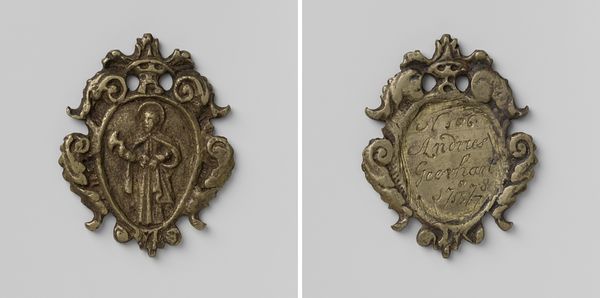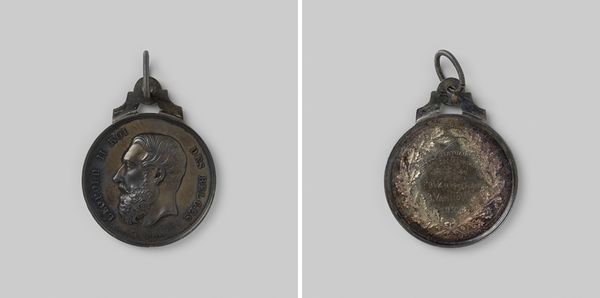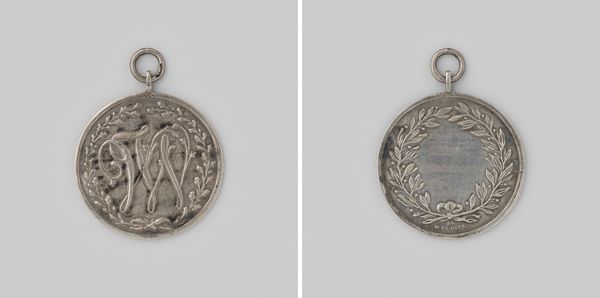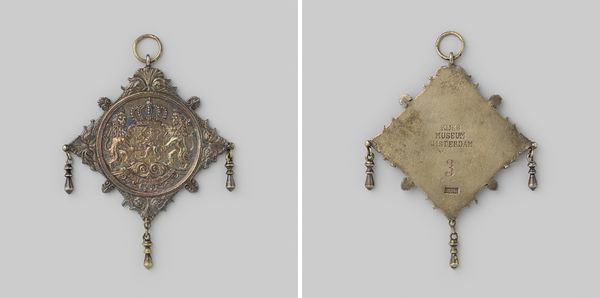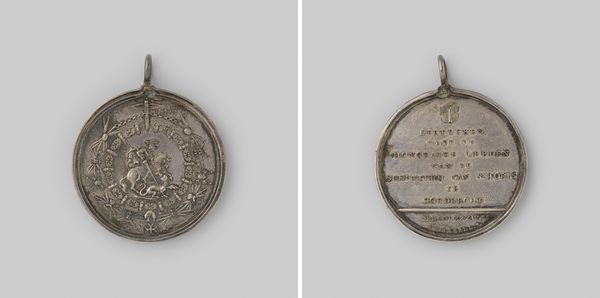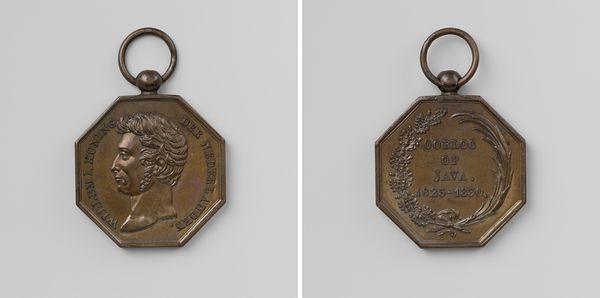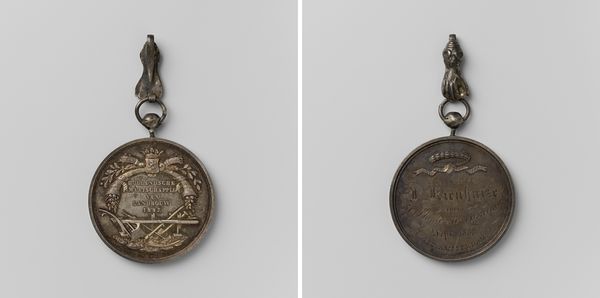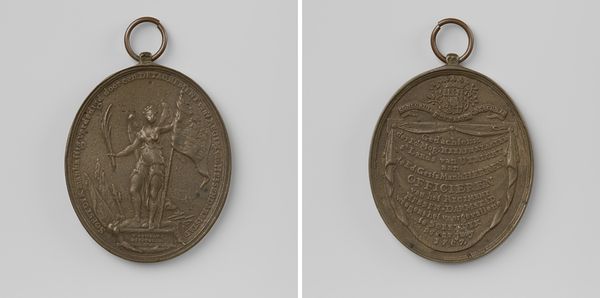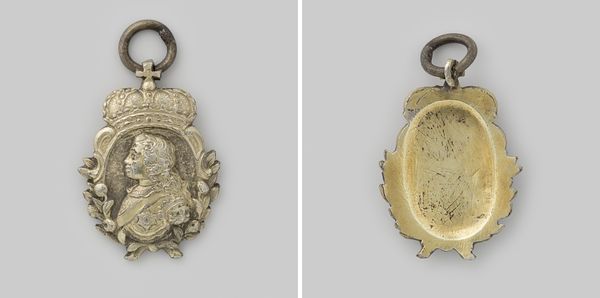
Orangistisch oproer te Middelburg, draagteken ter ere van Willem V, prins van Oranje-Nassau vervaardigd uit Overijsselse duit 1766 - 1787
0:00
0:00
Dimensions: diameter 3.2 cm, diameter 2.3 cm, thickness 0.2 cm, weight 4.24 gr
Copyright: Rijks Museum: Open Domain
Editor: This object is entitled "Orangistisch oproer te Middelburg, draagteken ter ere van Willem V, prins van Oranje-Nassau vervaardigd uit Overijsselse duit," created between 1766 and 1787 by Nicolaas Wonneman. It's made of silver, gold and other metals. It's a rather curious object, like a tiny medallion. It seems to commemorate a specific historical event. What can you tell me about this? Curator: Ah, yes, it whispers tales of a very specific time and place, doesn't it? This small piece, rich in symbolism, actually commemorates the Orangist uprising in Middelburg in support of William V, Prince of Orange. The symbols woven into this… the anchor for hope, perhaps? …all crafted meticulously in miniature. You can almost feel the fervor and anxieties of the time captured in the piece! Tell me, what details grab your eye? Editor: I suppose the anchor – a prominent feature below "ORS 1766." What does that signify? Curator: The anchor has many layers. It reflects Middelburg's reliance on shipping trade, sure, but also political and personal stability, you know? An emblem of hope during a time of unrest, perhaps a plea for a stable harbor amid a storm. You know, each time I see an object like this, I think, imagine the artisan pouring not only skill but his or her political longings into each meticulous carving! Editor: The back has some lovely decorative art. I love the script too; it's a shame I cannot understand it! So, I’m beginning to understand this piece better now: less a trinket, and more a historical, almost propaganda piece, wouldn't you say? Curator: Precisely! It’s a lens into a moment, a miniature manifesto crafted in metal and hope. I mean, when you look at something like that it does become immediately apparent just how involved decorative art and craft was to shaping a national idea, I think. Editor: Absolutely! It shows how historical artifacts often have deeper meanings and sociopolitical layers to unpack. Curator: I agree, It makes me consider how everyday objects can turn into symbols of powerful movements.
Comments
No comments
Be the first to comment and join the conversation on the ultimate creative platform.

